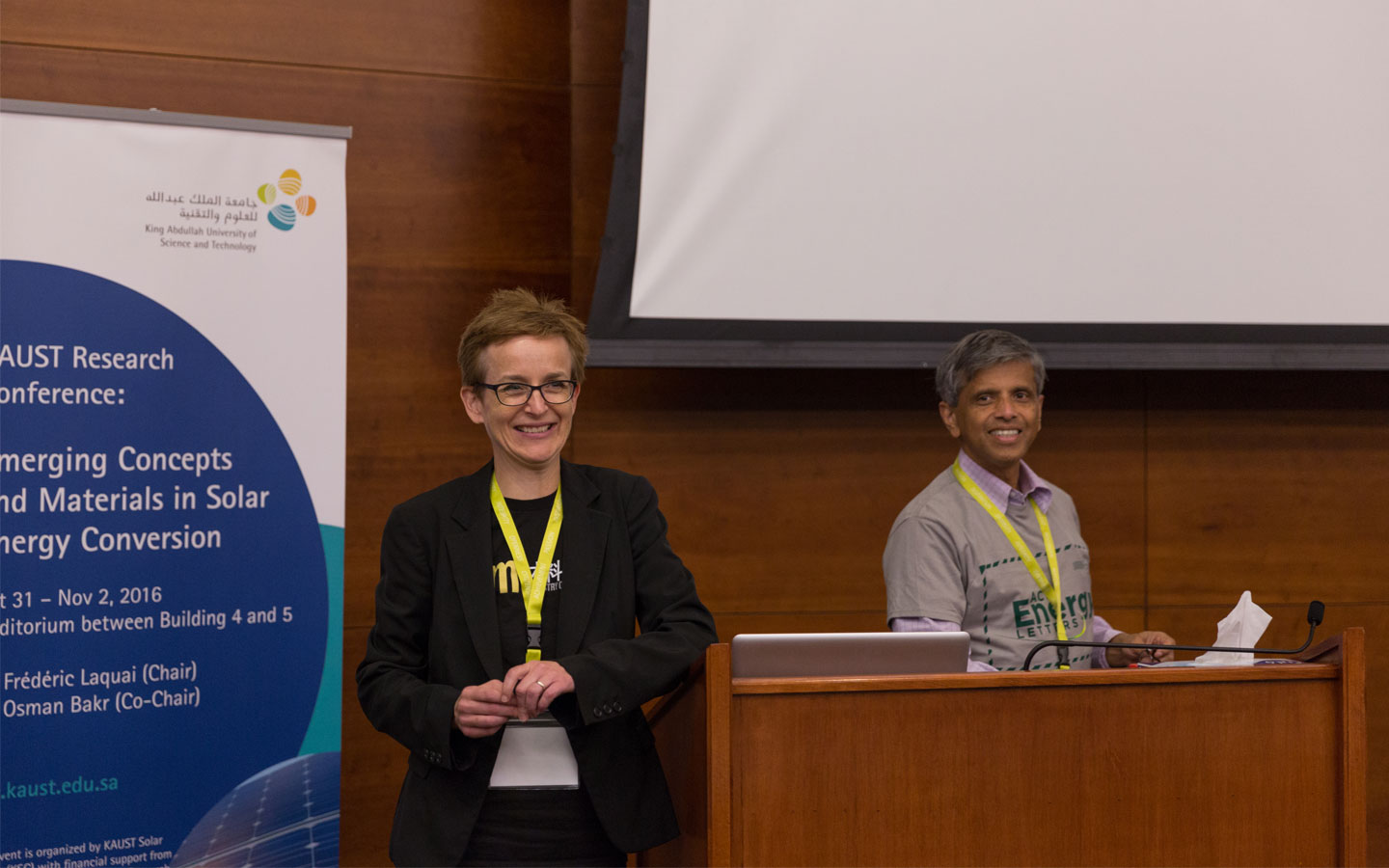Inspirational solar research

Dr. Jillian Buriak (L), professor of chemistry at the University of Alberta, and Dr. Prashant Kamat (R), professor of science from the Department of Chemistry and Biochemistry, University of Notre Dame, speak at the University's solar energy conference.
The University hosted the Emerging Concepts and Materials in Solar Energy Conversion research conference from October 31 to November 2. The conference brought together prominent scientists and researchers in the field of solar energy and conversion and other related disciplines to discuss current solar energy research practices, developments, discoveries, innovations and how ongoing research can be applied for the future of renewable energy.
The conference's main focus was on emerging research topics of current interest, such as perovskite solar cells; specifically new materials, device concepts and routes to address stability issues; quantum dot (QD) and advanced silicon solar cells; novel high-efficiency donor and non-fullerene acceptor materials for organic PV; photocatalysis (and specifically water splitting and carbon dioxide sequestration); and photochemical energy conversion.
In his opening remarks, KAUST President Jean-Lou Chameau said, "It is always a great pleasure to welcome groups like this to KAUST. I'm very pleased the Solar Center is moving ahead, as it is an important center. KAUST is currently in an exciting place with great people who come here with vision and goals. I hope this conference will generate great discussions and ideas we can work on."
Inspirational solar research
In the opening keynote of the conference, Dr. Prashant Kamat, professor of science from the Department of Chemistry and Biochemistry at the University of Notre Dame (U.S.), added, "New things are coming up and are very exciting in this field of research, and renewables are taking on a bigger role in the coming years."
In his afternoon address, invited speaker Abdulaziz AlTurki, owner and group chairman of Rawabi Holding, said he was happy to be part of the ongoing solar research conducted at KAUST.
"I am very proud to be part of the inspirational solar research team. We want to empower brilliant minds to equip them with the tools to find solutions to our biggest challenges. I hope KAUST will be a beacon of research to advance human societies and promote our well being," he said.
During her keynote address on the second day of the conference, Dr. Jillian Buriak, professor of chemistry at the University of Alberta (Canada) and editor-in-chief of the journal Chemistry of Materials, highlighted some of the areas in which solar concepts and developments can improve our world.
"We as humans produce 300 million tonnes of plastic per year. There is so much we can do with plastics, including energy conversion. We face challenges, but challenges are also opportunities. We have to get this solar thing right—that is why we're all here today. Our grandchildren depend on us," she said.
'We build on the science of others'
Various events were held of the course of the three days of the conference, including a graduate student poster session; a focus session with short oral contributions from young scientists; and a prize-awarding session that included a special KAUST Industry Collaboration Program (KICP) Innovation Award for the best presentation of a research project of significant market potential and industrial relevance.
The last day of the conference opened with short talks given by 12 junior scientists. After lunch, conference attendees had the choice to go on a guided Industry Engagement Office tour of the New Energy Oasis at the KAUST Research and Technology Park, the KAUST Core Labs and the KAUST Solar Center, or attend the "ACS on Campus" panel session that focused on the scholarly publishing process.
The ACS panel was led by Buriak, Dr. Kirk Schanze, editor-in-chief of ACS Applied Materials & Interfaces, and Kamat, editor-in-chief of ACS Energy Letters. The panel shared tips for preparing a successful manuscript, how to be a strong peer reviewer and tools for communicating science effectively.
When explaining just how a good scientific paper and or journal(s) can transcend your core targeted audience to reach a wider public audience, Kamat and Buriak shared some wisdom from their time publishing and reviewing scientific papers.
"If your paper does not generate citations, it might as well not have been done," said Kamat.
Buriak added, "Make sure your language is accessible to those who aren't in your area. You never know who will read your paper. Try make it as accessible to as broad of an audience as you can. We scientists don't live in a crystal box—we build on the science of others. Science is never done—never!"
The event was organized by the KAUST Solar Center (KSC), with financial support from the KAUST Office of Sponsored Research (OSR), and was co-sponsored by the KAUST Industry Collaboration Program (KICP), the Industry Engagement Office and the American Chemical Society (ACS).
By David Murphy, KAUST News
Related stories:
KAUST Solar Center officially inaugurated

